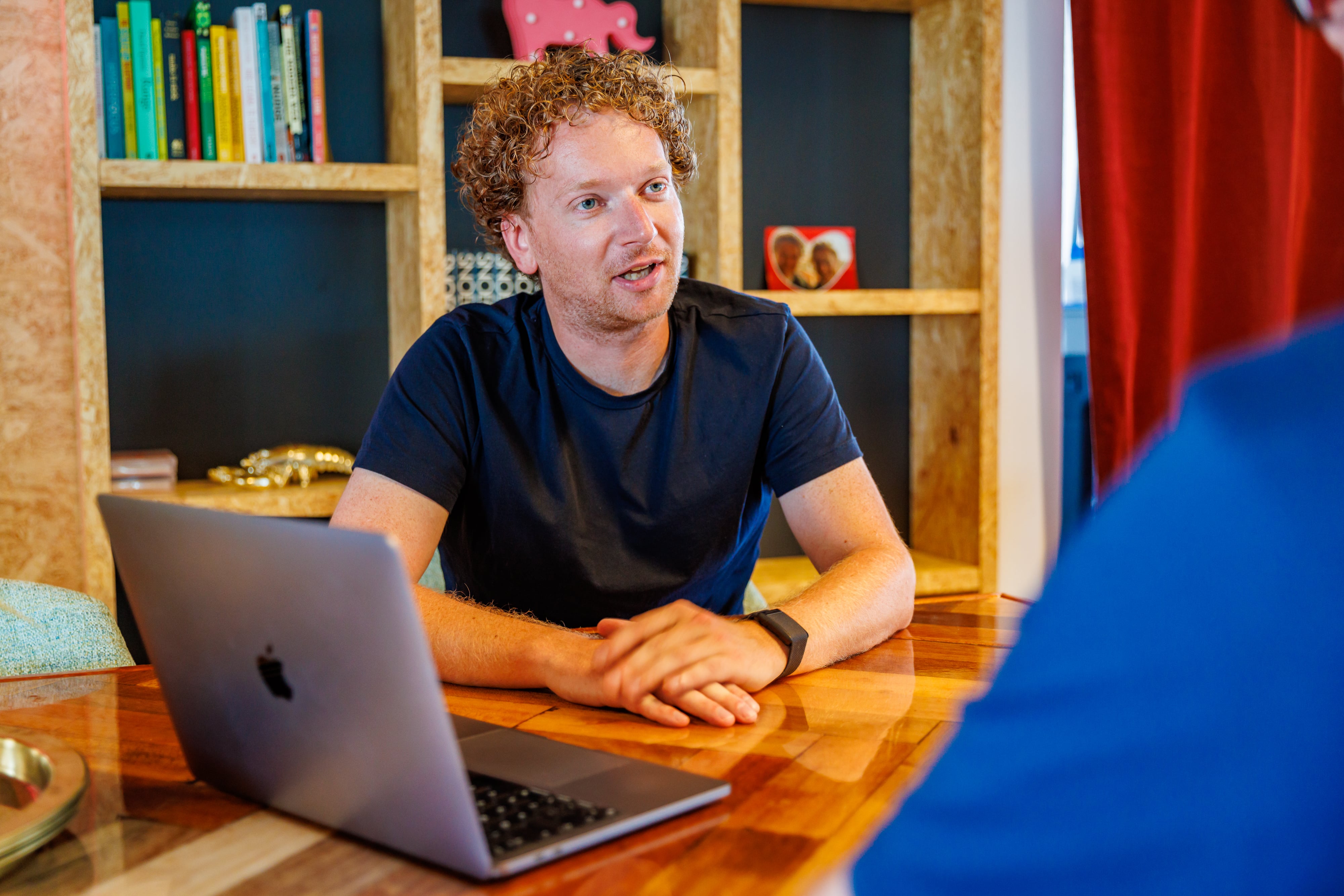Why you need to use learning goals to start your e-learning
You received the question to create an e-learning module on a certain topic. You have all the knowledge and ideas ready, but where do you start?
It’s smart to start with formulating the learning goals. What do you want the users to have learned at the end of the e-learning? Working with learning goals as a starting point for your e-learning has various advantages which can be substantiated in a good manner:
People want to know what they can expect. Learning goals ensure them to practice targeted.
Formulating the learning goals provides a framework of the total e-learning and this creates clarity. You’ll see the bigger picture, the red thread running through your e-learning, designing it from there goes much easier.
You’ll maintain grip and focus on the final result. When making decisions you repeatedly ask yourself the question: does this contribute to the learning goal I want to achieve?
Last but not least, it fits with the method of most of the online academies.
Learning and designing from learning goals
Naming the learning goals in advance gives people grip. They want know what they started, in case of the e-learning, to be able to go through it effectively and successfully.
Good to know is that people learn on three levels (van der Weelde, 2000:18):
Knowledge;
Skills;
Attitude.
It’s best to divide your learning goals in these three categories, because every category asks for a different approach. Learning for the knowledge goals primarily takes place through knowledge transfer, such as reading texts and watching videos, but don’t forget the power of repetition. By letting knowledge reappear in various ways, testing it and letting the user reproduce it enlarges the chance on succeeding. The skill goals are aimed at expressing the learned knowledge. The user cannot only recount it, but also apply it to (new) situations. Skills are mainly learned through exercise, experience and reflection. This can be exercises such as simulations, open questions, writing assignments, pitches, discussion fora, peer feedback and 360 degrees feedback in an e-learning.
Finally, there are the attitude goals. Attitude goals concern a certain attitude, a way in which one approaches life and their perspective on a situation. These can be very personal, but you can also aspire a certain attitude or thought culture within your organization. For example, an attitude in which continuous learning is widely supported, an improvement culture or ownership of your employees. Generally, attitude goals ask for perseverance. You can’t only see these goals in an e-learning, but they’re woven through the whole organization.

Creating overview
Selecting learning goals immediately gives you a total image of your e-learning. You have a framework in which you can create your chapters, modules or micro-learnings. Next, you can spread out the content you had already created over this framework. You now know the starting point of your e-learning, and it becomes clearer what the workload will be. When there’s a focus at a certain point, you can try to spread the workload some more or to break down the learning goal.
Grip and focus on the final result
Directly in line with this is the following point. While designing your e-learning you must ask yourself the same simple question over and over again when making a decision: Does this contribute to the learning goal I want to achieve? This ensures you to maintain grip and focus on the final result. Perhaps you have beautiful content, but it can’t be linked to one of the learning goals. Reconsider if you really must add it, or if you should make some adjustments. Imagine you have a skill goal concerning working together, it would be strange to have no assignments that must be performed in duo’s or smaller groups. So always compare your learning goals with the chosen work forms and assignments. Do they complement or contradict each other?
The method of online academies
Another additional advantage is that many online academies have the possibility to use learning goals as a measuring unit. Convenient for managers, content creators and administrators of the online academy. As an example, we have done it in such way that the earlier formulated learning goals do the work for you. Retrieving developed content is very easy when you use the learning goal as a searching term. You don’t only find what you’re searching for in a quick manner, but you also make cross curriculair teaching easier. In no time, you can create a new e-learning by combining existing content from various areas. Moreover, you can use the Brainpower tool to practice certain learning goals in a targeted manner. Brainpower monitors if the learning goal is achieved or not. In terms of continuous learning, you can also set the academy in such way it signals you when certain knowledge hasn’t been dealt with for over some time, or when new content is available as an addition to the learning goal.
Lastly
Much research has been done to talent development. Professor Anders Ericsson is convinced that people who perform on the highest level don’t have any special mental or physical powers. He proved that people who want to reach the top are able to reach it with almost every skill. His method? Practicing targeted (Deliberate practice, 2007 & Piek, Ericsson 2017). The expression ‘practice makes perfect’ is correct in this sense, but it does ask an enormous dedication and perseverance of the practitioner. Moreover, there’s a pitfall in this. You’re probably familiar with this: learning goals must be SMART. This way of formulating makes them testable and measurable, but the follow-up doesn’t become any more exciting. Do you want to create an attractive e-learning? In that case you want to make people curious, let them think and stimulate them. Unless you need hard numbers, formulating SMART isn’t a must. Yes, learning goals give a good focus to the user and to the designer, but you should leave some things to the imagination.
Download the whitepaper 'Benefits of an Online Academy' today and start growing!








